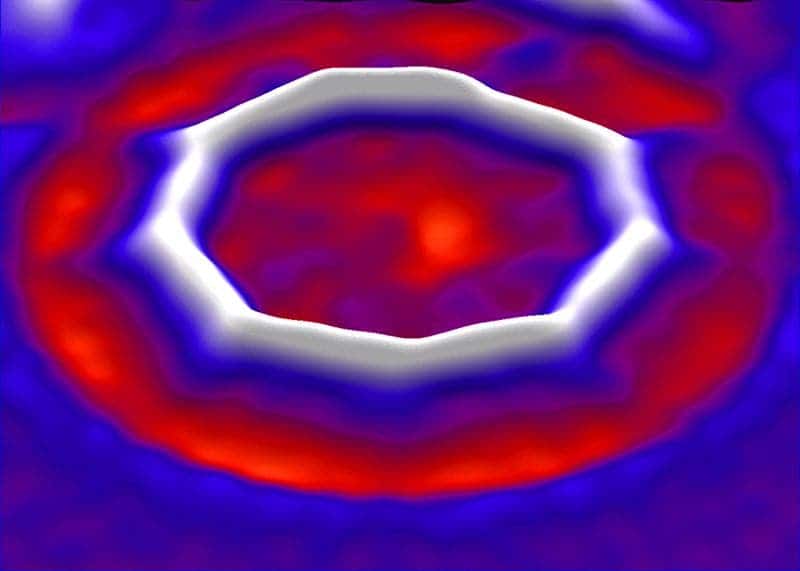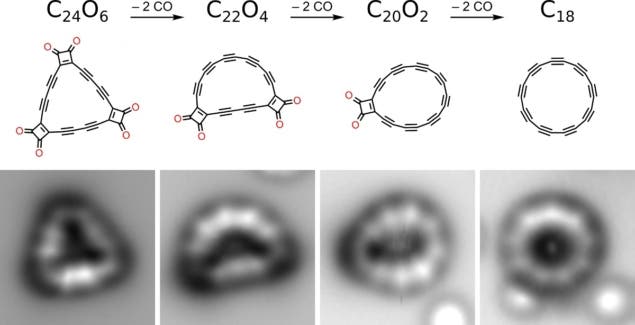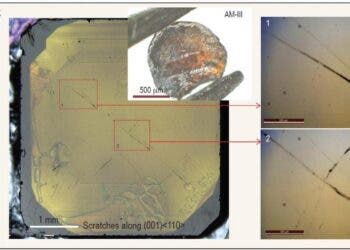
Since the 1960s, chemists have been trying to synthetize a ring-shaped molecule made of pure carbon. In a triumph of scanning probe microscopy, researchers at IBM Research Zurich and Oxford University have done just that by bonding an 18-atom-ring of carbon — a cyclocarbon.
Many have tried to make cyclocarbons, but in vain — until now
Bonding can make the difference between crumbling graphite and almost indestructible diamond. Both are made of carbon, but the former has carbon bonded to three other carbon atoms in a hexagonal lattice while the latter has carbon bonded with four other atoms in a pyramid-shaped pattern.
Decades ago, scientists — including Nobel Prize-winning chemist Roald Hoffmann — published work that theoretically showed that carbon can form bonds with just two nearby atoms. Each atom could form either a double bond on each side or a triple bond on one side and single bond on the other.
The trouble is that a cyclocarbon molecule is very chemically reactive and hence less stable than graphite or diamond.
In their new study published in Science, researchers led by Przemyslaw Gawel of the University of Oxford first made molecules that included chains of four-carbon-squares with oxygen atoms attached to these squares.

At IBM Research in Zurich, the oxygen-carbon molecules were exposed to a layer of sodium chloride in a high-vacuum chamber.
The extra oxygen was removed each at a time using an atomic-force microscope.
Many failed attempts later, the researchers had a micrograph scan in their hand showing an 18-carbon structure. The scan revealed that the carbon rings had alternating triple and single bonds — just like the theory predicted, or at least one of them. Previously, a competing theory suggested that a cyclocarbon molecule would be made entirely of double bonds.
The alternating bond types suggests that the C-18 rings have semiconducting properties, which could make them useful as components in molecular-sized transistors.
This is still very fundamental research, though. Scientists currently have to make the rings one molecule at a time, so it might be a while before we can find any practical use for cyclocarbons.
“The high reactivity of cyclocarbon and cyclocarbon oxides allows covalent coupling between molecules to be induced by atom manipulation, opening an avenue for the synthesis of other carbon allotropes and carbon-rich materials from the coalescence of cyclocarbon molecules,” the authors concluded.






